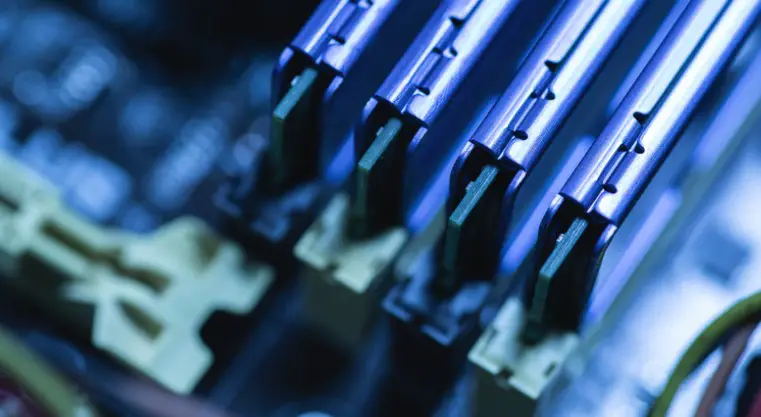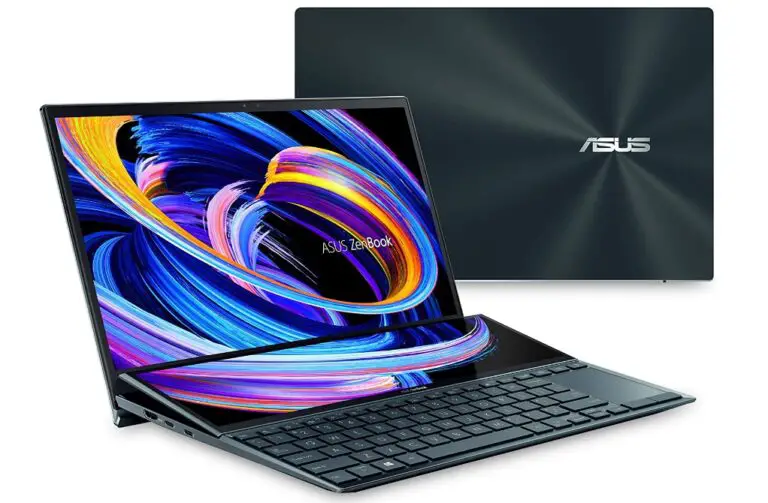Is 4gb Ram Enough For Windows 10?
These days, the question of whether 4GB RAM is enough for Windows 10 isn’t so much a matter of if it’s possible, but rather what kind of experience you’ll get with this configuration. With more and more applications requiring larger amounts of memory to run, the need for additional RAM has become increasingly important. But just how much do you really need? That’s what we’re here to find out in today’s article.
We’ll be taking an in-depth look at the pros and cons of running Windows 10 on only 4GB RAM. We’ll also cover various scenarios where having extra memory could make all the difference between a smooth user experience or one that leaves you frustrated and unable to complete your tasks properly. By exploring these topics, we hope to provide our readers with a better understanding of their system requirements when it comes to getting the most out of their computer.
So, let’s dive right into it – is 4GB RAM enough for Windows 10? Read on to find out.
What is Ram
Random Access Memory (RAM) is an essential component of computer memory. It’s a type of volatile memory, meaning that it stores data only while the device is powered on. RAM provides fast access to information needed by applications running on a computer. This makes it ideal for multitasking and allows users to switch quickly between programs.
So what exactly is RAM? In its most basic form, RAM is computer storage which can be read from and written to at random without having any discernible order or pattern. Every time you open a program or website, your CPU uses RAM as temporary workspaces – where all the calculations take place before being written back in permanent storage such as hard drives or solid-state drives. By utilizing RAM instead of slower forms of storage like HDDs, computers are able to run faster and more efficiently. With this understanding, let’s move onto discussing system requirements for Windows 10.
System Requirements For Windows 10
To ensure your device is ready to run Windows 10, you must first meet its system requirements. You’ll need a minimum of 1 GHz processor or faster with support for PAE, NX and SSE2; at least 4GB RAM; 20GB hard drive space; and DirectX 9 graphics device with WDDM driver. Additionally, virtual memory should be set as the same size as your physical RAM so that Windows 10 can utilize it properly.
When considering these specs, 4GB of RAM may seem sufficient to run Windows 10 effectively. However, depending on what tasks you’re performing and how many applications are running simultaneously, more memory may be necessary for optimal performance. To get an accurate understanding of the minimum RAM required for Windows 10 systems, let’s take a closer look at Microsoft’s official guidelines.
Minimum Ram Requirements For Windows 10
Moving on from the system requirements for Windows 10, this section will discuss minimum RAM requirements to run the OS. While 4GB of RAM may be enough to get Windows 10 running, it won’t provide an optimal user experience due to its limitations. Users must therefore understand what type of performance they can expect with different amounts of RAM and how much is actually needed for a good experience.
To better understand how RAM affects system performance, here are three key points:
- RAM quantity: The more RAM installed in your computer, the faster it will perform as multiple programs can run simultaneously without slowing down the processor. Low-end systems with only 4GB of RAM often struggle while running resource-heavy applications or when having too many browser tabs open at once.
- RAM speed: Faster RAM speeds allow data to transfer quickly between components which reduces overall latency and improves responsiveness when working with large files or gaming. It’s important to note that newer versions of Windows require higher clock speeds than older iterations so make sure you have up-to-date hardware if upgrading from an old version.
- Upgrade options: If you’re looking to upgrade your RAM but don’t want to invest in a new machine, there are several ways you can do it yourself such as adding additional memory modules or replacing existing ones. Just remember that not all types of memory are compatible so check your motherboard specifications before making any purchases.
With this information in mind, let’s answer our original question – how much ram is needed for optimal performance? Generally speaking, 8GB should be enough for most users who use their computer for everyday tasks like browsing the web or editing documents and photos. However, power users who game or work with graphics intensive software might need 16GB+ depending on their setup and preferences. Ultimately though, finding out exactly what works best requires trial and error given every computer’s unique configuration and usage habits. Taking into account all these factors should help give some clarity on which amount would suit one’s needs best.
How Much Ram Is Necessary For Optimal Performance?
Recent studies have shown that the average user requires around 8GB of RAM to run Windows 10 most efficiently. This figure is based on data from users with a variety of different needs and workloads, including gaming, video editing, multitasking, photo editing, streaming, etc. Of course, 4GB may be enough depending on your individual requirements and usage habits.
For example, if you only use basic programs such as Word or Excel then 4GB should be plenty. However, for more demanding tasks like playing games or running multiple applications at once then it’s likely that you will need more than just 4GB of RAM. Furthermore, if you are planning on using software that has high system requirements then this could easily exceed the 4GB limit too.
It’s clear that having an adequate amount of RAM is essential for optimal performance from your computer. But what effects does low ram have? We’ll explore this further in the next section.
Effects Of Low Ram On Performance
When it comes to computer performance, RAM plays a crucial role. Its main purpose is to store and allows access and manage data quickly by your system’s processor. Low RAM on Windows 10 systems can cause serious performance issues ranging from lagging applications to memory constraints due to a lack of free space for the OS or other programs. Here’s what you need to know about how low RAM affects your PC:
| Impact | Symptoms | Solutions |
|---|---|---|
| 1 | Slower boot times & app loading speeds | Increase available RAM |
| 2 | Increased frequency of “not responding” errors | Reduce RAM usage with updates & fixes |
| 3 | Laggy performance while multitasking | Upgrade hardware with more RAM |
| 4 | Overheating due to high CPU utilization | Close background processes |
When having limited amount of RAM, users will experience overall slower response times when launching apps or even starting up the operating system itself. On top of that, they may also face frequent “Not Responding” errors as well as laggy performance while trying to multitask multiple programs at once. The decreased speed is directly related to the amount of available memory being too small for all running tasks and therefore resulting in increased CPU utilization which leads to overheating problems if not addressed properly.
To mitigate these effects, users should start by reducing their overall memory usage through regular updates and fixing any potential software issues that might affect its efficiency. Increasing available RAM by upgrading hardware components whenever possible is another way of finding relief from such limitations. Additionally, manually closing background processes regularly helps reduce both CPU load and overall power consumption caused by them.
Upgrade Options For Increasing Ram
If you’re running on 4GB of RAM, Windows 10 may feel sluggish. The good news is that upgrading your RAM can give your computer the boost it needs. There are several options for increasing your RAM and each one has its own advantages and disadvantages.
For starters, you could opt to add extra RAM modules yourself or hire a professional to do so. Adding memory modules requires some technical knowledge but is generally easy enough to do with the right tools and supplies. It also lets you customize how much extra RAM you want to install in your system. On the other hand, hiring a professional means you won’t have to worry about any potential issues during installation.
Whether you decide to go with a DIY ram upgrade or hire someone else, make sure to choose high-quality components that meet the requirements of your PC for optimum performance. With the right memory upgrade, you’ll be able experience better speed and improved multitasking abilities from your machine.
Alternatives To Upgrading Ram
When it comes to increasing RAM, upgrading is not the only option. There are several alternative RAM options available for those looking to increase their computer’s memory capacity without actually replacing any physical components. One of these alternatives includes virtual RAM solutions, which can be used to enhance RAM performance and help optimize overall system operations.
Virtual RAM works by creating temporary files that exist in a location separate from your primary hard drive. This allows you to store data that would normally require additional space on your main hard drive within this alternate space instead. The result is increased RAM efficiency as well as improved system speed and reliability since less strain will be placed on your existing hardware resources. Furthermore, with virtual RAM solutions you don’t have to worry about going over budget or purchasing more expensive parts than what’s necessary – such as when buying a new RAM module – making them an ideal solution for users who want maximum performance without spending too much money.
Frequently Asked Questions
What Are The Differences Between Ram And Other Types Of Computer Memory?
When it comes to computer memory, there are a few types that you should be aware of. Random Access Memory (RAM) is one of the most important ones. RAM allows your device to quickly access and store information while running programs. It also helps with multitasking because it stores temporary data for quick retrieval when needed. But what about other types of computer memory? How do they compare to RAM?
There are several different kinds of RAM: Read Only Memory (ROM), Dynamic Random Access Memory (DRAM), Synchronous DRAM (SDRAM), Double Data Rate SDRAM (DDR SDRAM), and Low-Power DDR SDRAM (LPDDR SDRAM). ROM is used to store permanent data within a device, such as booting up an operating system or applications. DRAM is used in devices like PCs, laptops, tablets, etc., and contains both static and dynamic data – meaning it can hold data without power but will lose its contents if power is removed.
SDRAM has higher speeds than traditional DRAM due to its synchronous design which enables faster transfers between the processor and main memory. DDR SDRAM is similar but has double the transfer rate compared to single data rate designs allowing for greater performance when processing intense tasks such as gaming or video editing. Lastly, LPDDR SDRAM offers low power consumption making it ideal for mobile devices like smartphones and tablets.
So how does RAM compare to these other types of computer memory? Well, RAM is much more efficient at accessing data since it’s stored directly on the CPU rather than being stored offsite like with ROM or DRAM; this makes retrieving information from RAM much faster than from other forms of storage media. Additionally, unlike ROM which only stores static information, RAM can store both static and dynamic info so that your device can remain operational even after powering down until new information is added by the user or program. Ultimately, all types of computer memory have their own unique characteristics which make them suitable for different purposes depending on your needs – whether you’re looking for high speed performance or energy efficiency, each type provides something valuable in its own way.
How Can I Check My Current Ram Configuration?
It can be difficult to make sure your system is running smoothly, especially if you’re unsure of its RAM configuration. Fortunately, there are a few ways you can check your current RAM setup and make sure it’s up to date.
There are several methods for checking on the status of your RAM:
- RAM Configuration Check – This method allows users to view detailed information about their installed memory modules including type, size and speed.
- RAM Capacity Check – If you want to know exactly how much RAM you have in total or how much is available for installation, this option will provide that information.
- RAM Specs Check – You can use this option to get precise details about the specs of each individual chip inside your computer’s RAM module.
- System RAM Check – Using this particular method lets you assess all aspects of the performance of your system’s random access memory (RAM).
- RAM Usage Check – Lastly, by using tools such as Windows Task Manager or Resource Monitor, you can easily determine which processes and applications are currently consuming most of the resources from your PC’s RAM.
Understanding these different techniques for checking on your computer’s RAM can help ensure maximum efficiency when working with multiple programs at once or playing games that require large amounts of memory. It also ensures that should any problems arise due to low levels of RAM usage; then those issues can quickly be rectified by upgrading with additional memory chips or replacing existing ones with higher capacity versions.
By taking advantage of these various methods for monitoring one’s own system’s RAM configuration, users can keep tabs on their systems’ performance while feeling secure in knowing that everything is running optimally—allowing them more control over their machines than ever before.
How Do I Know If My Current Ram Is Compatible With Windows 10?
Have you ever wondered if your current RAM is compatible with Windows 10? With new updates and system requirements, it’s important to make sure that your PC memory meets the necessary specifications. In this article, we’ll explore how to check your RAM compatibility for Windows 10 as well as additional tips on ensuring PC compatibility.
From a technical standpoint, there are several ways to determine if your RAM is compatible with Windows 10. One way is to do an online search for “Windows 10 Compatible RAM” or “PC Memory Compatibility Checker”. This will bring up a list of websites which provide information about what type of memory works best with Windows 10. You can also use a tool like Crucial Advisor® to scan your computer and get specific recommendations for upgrading or replacing your RAM.
To ease the process of checking whether or not existing RAM is compatible with Windows 10, here are some useful steps:
- Run a diagnostic test on your computer using a program such as SiSoftware Sandra Lite
- Use an online resource such as PassMark Software’s Performance Test 9 Benchmark Tool
- Consult the manufacturer’s website to find out their recommended specs
- Perform regular maintenance tasks such as defragmenting hard drives and updating drivers
- Make sure you have enough available space on both physical memory (RAM) and storage drives before installing any software programs
If none of these methods work, consider investing in more RAM specifically designed for Windows 10. By doing so, you ensure that your computer runs optimally while avoiding any potential issues related to incompatible hardware components. Additionally, having more available memory allows you to run multiple applications simultaneously without experiencing slowdowns or other performance-related problems.
What Are The Advantages And Disadvantages Of Upgrading Ram?
Upgrading RAM on computers is an important decision to make when it comes to improving the performance of your device. It has both advantages and disadvantages, so understanding them before you commit can help you decide if increasing your RAM is right for you.
One advantage of upgrading RAM is that it allows faster processing speeds, which will improve the speed at which tasks are completed. This means less time waiting around for programs or web pages to load, and more time spent actually getting things done. Additionally, increased RAM also helps with multi-tasking — running multiple applications simultaneously without lag or slowdown — as well as boosting overall system stability. These improvements in efficiency can be especially useful for gamers looking for a smoother experience across their games.
On the other hand, there are some drawbacks to consider when deciding whether or not to upgrade your RAM. Firstly, buying additional memory modules may involve significant costs depending on what type and brand of hardware you need; secondly, installation can require technical know-how or assistance from a professional technician; lastly, allocating additional resources towards expanding RAM could mean sacrificing other components like storage space.
In summary, upgrading RAM on computers provides a range of benefits such as improved processing speeds and better gaming performance. However, these gains should be weighed up against potential downsides including cost and difficulty in installing new hardware correctly. Whether this kind of investment is necessary depends largely on individual users’ needs and budget constraints.
Is There A Way To Increase Ram Without Upgrading Physical Hardware?
Are there ways to increase RAM without needing to upgrade physical hardware? Yes, in the modern world of technology, increasing RAM is entirely possible. Through virtual memory and other methods such as a ram booster, memory optimizer, memory cleaner, or disk defragmenter it is easy to give your system a boost that will help it work faster and more efficiently.
Virtual memory allows you to use hard drive space instead of physical RAM. This means that when all the physical RAM has been used up by running programs, data can then be stored in free spaces located on the computer’s hard drive. As an added bonus this also helps with freeing up some space within the actual physical RAM itself. It can also be seen as a form of backup storage for important files and documents so even if something goes wrong with the PC or laptop you don’t need to worry about losing vital information.
For those who are feeling adventurous enough they could always try out different software solutions in order to get their computers working at optimal levels once again. For example, using a ram booster will help speed up processes that require accessing huge amounts of data from the main memory while using memory optimizers to clean out unnecessary temporary files thus providing more resources for heavier tasks. Memory cleaners go one step further by actively managing what type of applications run in the background which would otherwise consume precious power from your device without you knowing about it. Finally, disk defragmenters unite fragments of data across multiple disks into larger chunks allowing them easier access thus helping improve performance significantly.
Conclusion
In conclusion, it’s important to understand the differences between RAM and other types of computer memory. Checking your current RAM configuration can help you decide if upgrading, or another solution such as virtual memory, is necessary for a smooth Windows 10 experience.
On one hand, more RAM offers better performance and multitasking capabilities but comes with additional costs. On the other hand, 4GB of RAM may be enough depending on individual usage patterns and hardware configurations. It all depends on what you need your system to do; while some users will benefit from an upgrade, others may not see any improvement in their daily tasks.
Ultimately, it’s up to you to assess your needs and make an informed decision about how much RAM you should have installed in order to get the most out of Windows 10.








One Comment